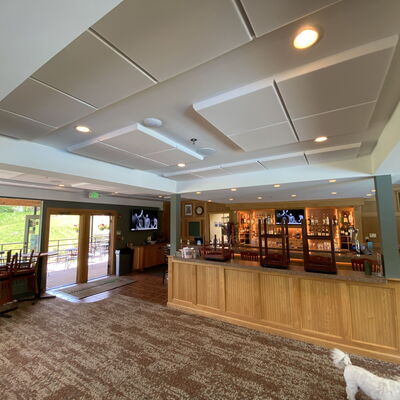- DDS Acoustical Specialties
- Applications
- Architectural
- Sensory Rooms
Enhancing Calm and Focus in Therapeutic Spaces
Sensory rooms are specially designed environments that provide therapeutic benefits for individuals with sensory processing disorders, autism, ADHD, and other conditions. These spaces are intended to offer a calm, controlled atmosphere where users can explore sensory stimuli in a safe and soothing manner. However, unwanted noise from external sources, echo, or reverberation within the room can disrupt the therapeutic experience, making effective noise control a critical component of sensory room design.
Sensory room noise control solutions include acoustic panels, soundproofing materials, noise-absorbing flooring, and tailored acoustic treatments that reduce unwanted sounds, create a quieter environment, and enhance the overall sensory experience. These solutions work to absorb, block, and diffuse noise, ensuring that the room remains a tranquil space where users can relax, focus, and engage without distractions. By investing in noise control for sensory rooms, caregivers, educators, and therapists can optimize the environment for therapy, learning, and relaxation.
Implementing noise control measures in sensory rooms not only improves the acoustic environment but also supports the intended therapeutic goals of the space. Whether creating a sensory room in a school, healthcare facility, or private home, noise control is essential to providing a safe and effective environment for sensory exploration and therapy.
Fosters calm, reduces sensory overload, enhances focus, supports therapy, and creates a safe, adaptable space for relaxation and exploration.
Benefits of Sensory Room Noise Control
- Enhanced Focus and Engagement
- Reduced Sensory Overload
- Improved Therapy Outcomes
- Safe and Calming Environment
- Flexible for Multi-Use
Most Often Used Products

Fabric Wrapped Acoustic Panels
Great acoustics are essential in all public and private environments. Whether you're designing a quiet office, an inspiring classroom, or an immersive performance space, managing noise and controlling sound reflections is critical.

Acoustic Foam
Acoustic foam offers an affordable, flexible, and effective solution for managing echo, reverberation, and excess noise.

Stretch Fabric Systems
Stretch fabric wall and ceiling systems offer a flexible, high-performance acoustic solution for spaces where design precision and visual impact are key.

Acoustic Sound Diffusers
In the world of architectural acoustics, achieving optimal sound quality is about more than just stopping noise—it's about shaping it. Create balanced, natural-sounding spaces by scattering sound waves.
Frequently Asked Questions
A:
Noise control creates a calm and controlled environment, reducing sensory overload and enhancing the focus and comfort of individuals using the space.
A:
By minimizing background noise, acoustic treatments improve communication and interaction between therapists and individuals, leading to more effective therapy sessions.
A:
Effective solutions include soundproofing walls, acoustic ceiling or wall panels, and sound barriers to create a quieter and more focused environment.
A:
Yes, sound-absorbing materials minimize loud and sudden noises, creating a soothing atmosphere tailored to individuals with heightened sensory sensitivities.
A:
Acoustic solutions make sensory rooms versatile for therapy, education, and relaxation, ensuring the space can accommodate different needs without compromising comfort.
A:
Absolutely. Acoustic solutions are available in various designs and colors, allowing them to blend seamlessly with the sensory room’s calming aesthetic.
A:
Quieter spaces reduce distractions, helping caregivers and therapists maintain a secure and focused environment for individuals with sensory sensitivities.

